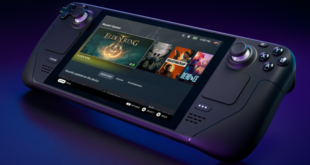Valve founder and president Gabe Newell has confirmed that Valve is working on its own Linux-based living-room PC.
Yesterday brought the revelation of a third-party device built by Xi3 built with Steam’s Big Picture Mode in mind, to be revealed at the Consumer Electronics Show in Las Vegas.
Today, Newell told Polygon that Valve was working on its own system, which would run on Linux.
"We’ll come out with our own and we’ll sell it to consumers by ourselves," said Newell.
"That’ll be a Linux box. If you want to install Windows you can. We’re not going to make it hard. This is not some locked box by any stretch of the imagination."
Worries that Valve was answering Windows 8, which it percieved as a closed platform and a "disaster" for PC gaming, with its own relatively closed PC will be somewhat relaxed by this news.
The system is known internally as "Bigfoot", and is designed with the goal of building "a thing that’s quiet and focuses on high performance… and appropriate form factors."
As well as working on "Bigfoot", Valve is also working with nVidia to create hardware for streaming games to the TV. In addition, the company is also working on new input devices.
"We also think that a controller that has higher precision and lower latency is another interesting thing to have," Newell said.
Biometrics has been one of Valve’s talking points for some time now, and Newell didn’t leave this out of the discussion either.
"Biometrics on the other hand is essentially adding more communication bandwidth between the game and the person playing it especially in ways the player isn’t necessarily conscious of," he added.
"Biometrics gives us more visibility. Also, gaze tracking. We think gaze tracking is gonna turn out to be super important."
Eventually, Newell sees the living room PC as being able to support not only multiple monitors for a single player as is current practice, but hosting lan parties from a single machine.
"Any PC can serve multiple monitors, so over time, the next-generation (post-Kepler) you can have one GPU that’s serving up eight simulateneous game calls," he said.
"So you could have one PC and eight televisions and eight controllers and everybody getting great performance out of it. We’re used to having one monitor, or two monitors – now we’re saying lets expand that a little bit."

 MCV/DEVELOP News, events, research and jobs from the games industry
MCV/DEVELOP News, events, research and jobs from the games industry



